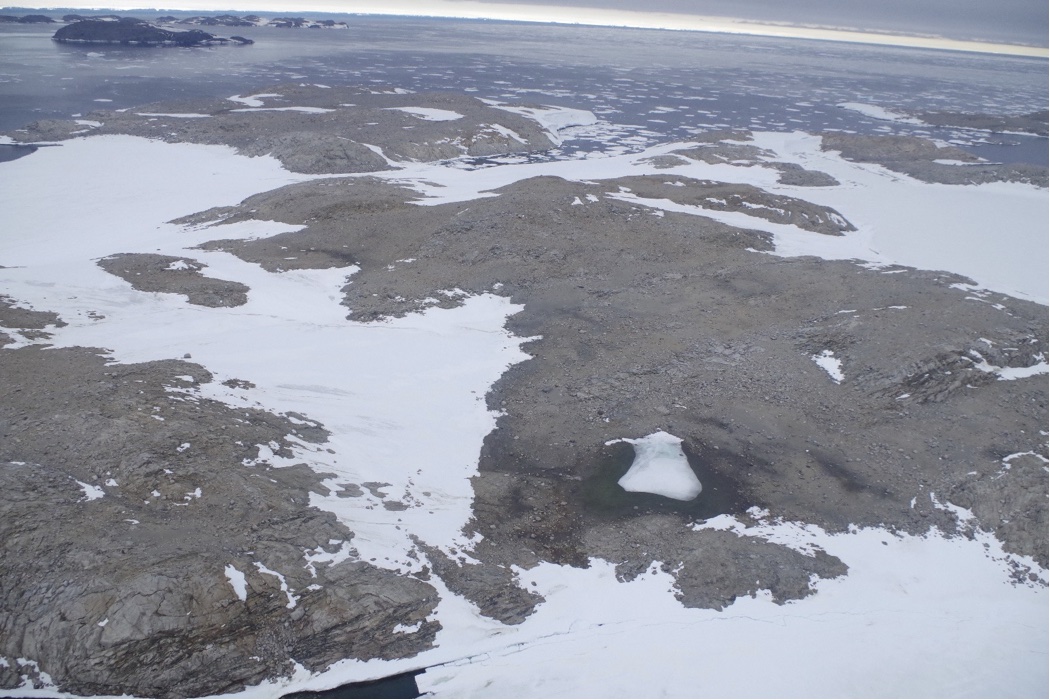Reconstructing relative sea level change along the coast of East Antarctica
Project overview
Uncertainties in satellite measurements of East Antarctica’s contribution to present day sea level rise are associated with the solid Earth’s response to past deglaciation (glacial-isostatic adjustment – GIA). A major disagreement is within the Australian Antarctic Territory where models disagree about the magnitude and, in some cases, sign of current uplift/subsidence rates (Argus et al., 2014; Whitehouse et al., 2012). One approach to reducing uncertainty is through accurate reconstructions of past relative sea-level (RSL) change which is directly related to 1) global (eustatic) sea level change, and, crucially, 2) local glacio-isostatic uplift.
A recent Antarctic field program collected sediment cores from Antarctic lakes in the Windmill Islands, a rare ice-free area on the East Antarctic coast between 100° and 150° East. These provide a unique opportunity to obtain geological data to constrain past RSL change, and thus GIA. The sampled lakes are located below the highest post-glacial sea-level and are ideal for reconstructing past RSL changes using the isolation basin approach (Roberts et al., 2011). The project will identify marine/freshwater transitions within the lake sediments using a multi-proxy approach including geophysical, geochemical, and micro-palaeontological methods. Key transitions will be dated using radiocarbon dating.
The student will receive training in Antarctic lake core analysis including sample selection, picking for analyses, selection of material for radiocarbon dating, and East Antarctic ice sheet history and GIA. The project links to ongoing work by Durham staff and Australian colleagues. The student can take part in online project meetings to discuss data and results.
If you are interested in this project please contact the lead supervisors:
Dr David Small (david.p.small@durham.ac.uk)
Prof. Mike Bentley (m.j.bentley@durham.ac.uk)

Key references
Argus, D.F., Peltier, W.R., Drummond, R. and Moore, A.W., 2014. The Antarctica component of postglacial rebound model ICE-6G_C (VM5a) based on GPS positioning, exposure age dating of ice thicknesses, and relative sea level histories. Geophysical Journal International, 198(1), pp.537-563.
Roberts, S.J., Hodgson, D.A., Sterken, M., Whitehouse, P.L., Verleyen, E., Vyverman, W., Sabbe, K., Balbo, A., Bentley, M.J. and Moreton, S.G., 2011. Geological constraints on glacio-isostatic adjustment models of relative sea-level change during deglaciation of Prince Gustav Channel, Antarctic Peninsula. Quaternary Science Reviews, 30(25-26), pp.3603-3617.
Whitehouse, P.L., Bentley, M.J., Milne, G.A., King, M.A. and Thomas, I.D., 2012. A new glacial isostatic adjustment model for Antarctica: calibrated and tested using observations of relative sea-level change and present-day uplift rates. Geophysical Journal International, 190(3), pp.1464-1482.


/prod01/prodbucket01/media/durham-university/departments-/geography/Matt_Couchmann-3872X1296.JPG)